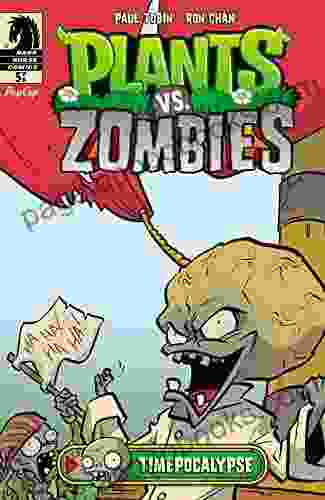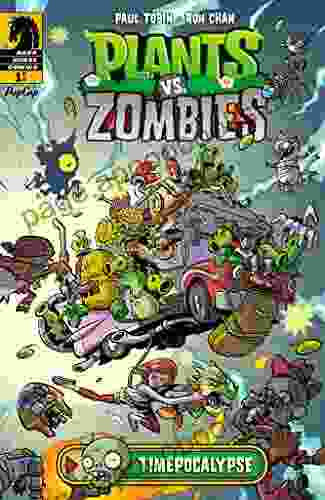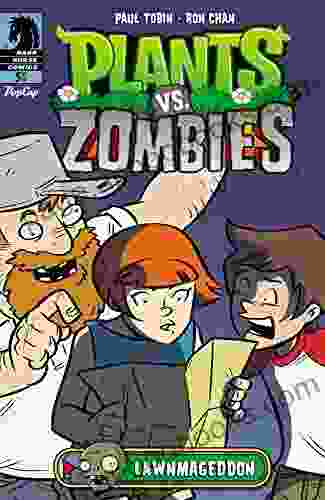Preserving the Legacy of the Lost Cause: Exploring Confederate Soldiers Homes in the New South

As the echoes of the American Civil War faded into the annals of history, the defeated Confederate States of America left an enduring legacy upon the Southern landscape. Among the most tangible remnants of that era are the Confederate Soldiers Homes, institutions established to provide refuge and support for the aging and disabled veterans of the Lost Cause.
Scattered across the former Confederate states, these homes played a vital role in preserving the memory of the Confederacy and its ideals. They served as centers of community, repositories of Confederate memorabilia, and symbols of the Southern heritage that had been shattered by the war.
4.3 out of 5
| Language | : | English |
| File size | : | 8753 KB |
| Text-to-Speech | : | Enabled |
| Screen Reader | : | Supported |
| Enhanced typesetting | : | Enabled |
| Word Wise | : | Enabled |
| Print length | : | 264 pages |
In this comprehensive article, we will delve into the fascinating history, architectural heritage, and enduring impact of Confederate Soldiers Homes in the New South. Through vivid descriptions and evocative imagery, we will uncover the stories of the men who found solace within these walls and the communities that embraced them.
Historical Context
The origins of Confederate Soldiers Homes can be traced back to the waning days of the Civil War, when the Confederate government recognized the need to provide care for its disabled and indigent veterans. In February 1865, Congress passed a resolution authorizing the establishment of state-run homes for "invalid soldiers and seamen." However, the war's end and the collapse of the Confederacy prevented any concrete action from being taken.
After the war, the responsibility for Confederate veterans fell upon the individual states. In the decades following Reconstruction, former Confederate soldiers faced widespread economic hardship, social stigma, and limited access to medical care. Recognizing the desperate plight of these men, Southern states began establishing Soldiers Homes to provide them with a roof over their heads, food on their tables, and medical attention.
Architectural Heritage
Confederate Soldiers Homes were typically constructed in a variety of architectural styles, reflecting the diverse influences that shaped Southern architecture in the post-war era. Many homes were built in the Victorian Gothic style, characterized by pointed arches, steep roofs, and elaborate ornamentation. Others were designed in the more restrained Neoclassical style, featuring symmetrical facades and classical details.
Regardless of their architectural style, Confederate Soldiers Homes shared certain common features. They were typically large, sprawling complexes with multiple buildings, including dormitories, dining halls, infirmaries, and chapels. The grounds were often landscaped with trees, gardens, and monuments dedicated to Confederate heroes.
One of the most iconic Confederate Soldiers Homes is the Tennessee Confederate Soldiers' Home in Lebanon, Tennessee. Established in 1887, the home is a sprawling Victorian Gothic complex that has been meticulously preserved and restored. Its grand entrance, flanked by two imposing towers, leads into a courtyard surrounded by dormitories and other buildings.
Community and Identity
Beyond their architectural significance, Confederate Soldiers Homes played a vital role in the social and cultural life of the New South. They provided a sense of community and belonging for aging and disabled veterans who had lost everything during the war. Within these walls, they found camaraderie, shared stories, and kept the memory of the Confederacy alive.
The homes also became centers for the preservation of Confederate memorabilia and the dissemination of Lost Cause ideology. They housed museums and libraries that displayed Confederate flags, uniforms, and other artifacts. Veterans and visitors alike gathered in these spaces to listen to lectures, sing Confederate songs, and celebrate the heroes of the "War for Southern Independence."
The Confederate Soldiers Homes were not without their critics. Some Northerners viewed them as symbols of unreconstructed rebellion and a threat to national unity. However, for many Southerners, the homes represented a tangible connection to their past and a way to honor the sacrifices of their ancestors.
Legacy and Preservation
Confederate Soldiers Homes continued to operate into the 20th century, providing care for the last surviving veterans of the Civil War. As time passed, their role shifted from providing shelter to preserving the memory of the Confederacy. Many homes were converted into museums and historic sites.
Today, Confederate Soldiers Homes stand as reminders of the complex and often contradictory legacy of the Civil War. They are symbols of both the lost cause and the resilience of the Southern spirit. By preserving these historic treasures, we not only honor the sacrifices of the men who fought and died for the Confederacy but also gain a deeper understanding of the enduring impact of that conflict upon American history and culture.
The Confederate Soldiers Homes of the New South are fascinating and important historical sites that offer a glimpse into the past and a window into the enduring legacy of the Civil War. Through their architecture, their stories, and their impact on their communities, these homes continue to resonate with our present and inspire our understanding of the American experience.
By preserving and interpreting these historic treasures, we can ensure that the memory of the Confederate Soldiers Homes and the men who lived within their walls will continue to be passed down to future generations.
4.3 out of 5
| Language | : | English |
| File size | : | 8753 KB |
| Text-to-Speech | : | Enabled |
| Screen Reader | : | Supported |
| Enhanced typesetting | : | Enabled |
| Word Wise | : | Enabled |
| Print length | : | 264 pages |
Do you want to contribute by writing guest posts on this blog?
Please contact us and send us a resume of previous articles that you have written.
 Book
Book Novel
Novel Page
Page Chapter
Chapter Text
Text Story
Story Genre
Genre Reader
Reader Library
Library Paperback
Paperback E-book
E-book Magazine
Magazine Newspaper
Newspaper Paragraph
Paragraph Sentence
Sentence Bookmark
Bookmark Shelf
Shelf Glossary
Glossary Bibliography
Bibliography Foreword
Foreword Preface
Preface Synopsis
Synopsis Annotation
Annotation Footnote
Footnote Manuscript
Manuscript Scroll
Scroll Codex
Codex Tome
Tome Bestseller
Bestseller Classics
Classics Library card
Library card Narrative
Narrative Biography
Biography Autobiography
Autobiography Memoir
Memoir Reference
Reference Encyclopedia
Encyclopedia Mimi Dietrich
Mimi Dietrich William Thomas Brumley
William Thomas Brumley Sue Martin
Sue Martin Lee Jacquot
Lee Jacquot Meia Monae
Meia Monae Michael Payne
Michael Payne Paolo Menconi
Paolo Menconi Melissa Devenport
Melissa Devenport Olivier Schmitt
Olivier Schmitt Mike Mignola
Mike Mignola Trickster Publishing Academy
Trickster Publishing Academy Michael J Fusco
Michael J Fusco Nate Procrasti
Nate Procrasti Michael E Heyes
Michael E Heyes Natasha Sizlo
Natasha Sizlo Shawn Henning
Shawn Henning Mimi Barbour
Mimi Barbour Mary Jane Baxter
Mary Jane Baxter Mykel Barthelemy
Mykel Barthelemy Mike Jones
Mike Jones
Light bulbAdvertise smarter! Our strategic ad space ensures maximum exposure. Reserve your spot today!

 Dave SimmonsUnleash the Thrill: Immerse Yourself in the World of John Corey, Joe Ryker,...
Dave SimmonsUnleash the Thrill: Immerse Yourself in the World of John Corey, Joe Ryker,...
 Joe SimmonsEmbark on a Vibrant Cross-Stitch Adventure with the Fire Truck Cross Stitch...
Joe SimmonsEmbark on a Vibrant Cross-Stitch Adventure with the Fire Truck Cross Stitch...
 Giovanni MitchellUnravel the Enigmatic Secrets of Austria: An Immersive Journey with Alex...
Giovanni MitchellUnravel the Enigmatic Secrets of Austria: An Immersive Journey with Alex... Terry BellFollow ·17.3k
Terry BellFollow ·17.3k Eugene ScottFollow ·7.3k
Eugene ScottFollow ·7.3k Langston HughesFollow ·9.6k
Langston HughesFollow ·9.6k Jaden CoxFollow ·3.3k
Jaden CoxFollow ·3.3k Fredrick CoxFollow ·17.3k
Fredrick CoxFollow ·17.3k Ruben CoxFollow ·15.4k
Ruben CoxFollow ·15.4k Logan CoxFollow ·7.2k
Logan CoxFollow ·7.2k Jonathan HayesFollow ·13.6k
Jonathan HayesFollow ·13.6k

 Ben Hayes
Ben HayesJourney into the Verdant Realm of "Plants vs. Zombies:...
Immerse Yourself in an Epic Battle for...

 Edward Reed
Edward ReedUnveiling the Allure of Modish Crochet Hats Annie...
In the realm of fashion and...

 Jaylen Mitchell
Jaylen MitchellHalf Moon Bay: An Unforgettable Adventure Awaits in Aj...
Prepare yourself...

 Dan Brown
Dan BrownUnleash the Plant-Powered Apocalypse: Dive into Paul...
Prepare yourself for an epic showdown where...

 Efrain Powell
Efrain PowellStolen Summer: Nora Sommer's Enthralling Caribbean...
Escape to a World of...

 Steven Hayes
Steven HayesPlants vs. Zombies: Lawnmageddon - The Ultimate Battle...
Prepare for the ultimate battle between plants...
4.3 out of 5
| Language | : | English |
| File size | : | 8753 KB |
| Text-to-Speech | : | Enabled |
| Screen Reader | : | Supported |
| Enhanced typesetting | : | Enabled |
| Word Wise | : | Enabled |
| Print length | : | 264 pages |






